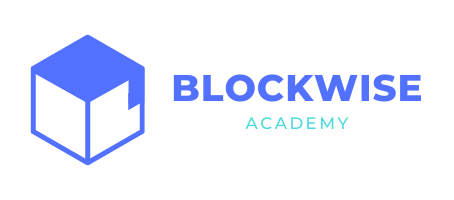BlockWise
- 17 Jan, 2024
- 0 Comments
- 4 Mins Read
7 Simple Steps To DYOR (Do Your Own Research) in 2024
TL;DR
- Master foundational blockchain concepts before diving into projects.
- Prioritize projects with reputable external audits for security.
- Employ a holistic approach: assess fundamentals, tokenomics, documentation, community engagement, and the project team.
- Stay rational and research-driven to guard against FOMO.
Introduction
Venturing into the realm of cryptocurrency is akin to exploring a dynamic, ever-evolving jungle. While it promises exhilarating opportunities, it also poses challenges. Navigating this landscape successfully demands adopting a comprehensive ‘Do Your Own Research’ (DYOR) approach. In this detailed guide, we embark on an exploration of each facet of the DYOR process, equipping you with the insights and tools necessary for making well-informed decisions in the cryptoverse.
“Research is what I’m doing when I don’t know what I’m doing.”
-Wernher von Braun
1. Understand the Basics
Before immersing yourself in the specifics of any cryptocurrency project, establish a robust understanding of the foundational concepts that underpin the entire blockchain ecosystem. Familiarize yourself with key elements such as decentralized finance (DeFi), smart contracts, blockchain, rollups, and bridges. Beyond traditional learning platforms, explore educational resources like BlockWise courses, as well as the following resources:
- Lorem ipsum dolor sit amet, consetetur sadipscing.
- At vero eos et accusam et justo duo dolores et ea rebum.
- Stet clita kasd gubergren, no sea takimata sanctus est Lorem ipsum dolor sit amet.
- Consetetur sadipscing elitr, sed diam nonumy eirmod tempor invidunt.
2. Evaluate Project Fundamentals
Beyond the technical aspects, gaining insights into a project’s mission, vision, and target market is essential. Delve into the project’s documentation to understand its unique features, competitive advantages, and the real-world problems it aims to address. Engage with the project’s team and community to seek clarification on any unclear aspects. Assess the project’s innovative edge, considering the problem it solves and its roadmap. Transparency in regularly updating milestones is crucial. Evaluate potential risks and forecast the ripple effect of the project’s successful implementation.
3. Analyze Tokenomics
okenomics, the economic model governing a cryptocurrency’s token, is a critical aspect of project sustainability. Carefully scrutinize the token distribution structure, looking out for any suspicious allocations, especially if a significant portion is earmarked for project insiders. Be wary of potential scams related to token distributions, such as malicious airdrop attempts, and always verify the authenticity of such announcements. Dive into tokenomics by examining supply, issuance tactics, allocation, distribution, vesting/lock-up schedules, utility, market cap, volume, and liquidity. Tokenomics is not just for speculation but a vital factor in a project’s long-term viability.
4. Review the Project Team:
The success of a cryptocurrency project is intricately tied to the experience, expertise, and transparency of its team members. Conduct thorough research into the backgrounds, past projects, and track records of the team. Exercise caution when dealing with projects led by anonymous individuals, as transparency is crucial for building trust.
Evaluate the team’s balance, relevant experience, and connections in the industry. Check if the team is doxxed, indicating a vested interest in the project’s success. Reach out to the team with questions and assess their responsiveness.
5. Validate External Audits:
Security is paramount in the cryptocurrency space, and smart contract audits serve as a formidable defense against potential exploits and vulnerabilities. It is imperative to ensure that the project you are considering has undergone thorough audits by credible firms. Reputable Web3 security auditors, including OpenZeppelin, Trail of Bits, Consensys, Hacken, Spearbit, and Halborne Security, can significantly enhance a project’s code security. Additionally, projects with open-source codebases, such as Ethereum, allow for continuous scrutiny by the community.
6. Examine Documentation:
A meticulous review of a project’s documentation can reveal crucial insights. Watch out for red flags such as unsubstantiated sources, anonymous authors, or plagiarized content. Attention to detail, including the absence of typos, missing content, or broken links, can serve as indicators of the project’s professionalism and reliability.
7. Observe Socials:
An active and engaged community is often a positive indicator of a project’s potential. Participate in the project’s social media channels, including Telegram, Discord, and Twitter, to gauge community sentiment. However, be cautious of manipulated metrics and seek genuine engagement. Additionally, partnerships with established companies can bolster a project’s credibility and potential for success.
Examine the project’s social presence, focusing on official channels’ activity levels and community engagement. A healthy, balanced, and objective community discussion is indicative of a project’s robust foundation.
8. (BONUS TIP) Overcome FOMO (Fear of Missing Out):
The fear of missing out (FOMO) is a powerful psychological motivator that can cloud judgment. Guard against feeling pressured to hastily engage with a project. Scammers often exploit FOMO through schemes like honeypots, emphasizing the importance of maintaining a rational and research-driven approach.
Other Considerations:
Numbers surrounding a project, such as social media metrics, market capitalization, and tokenomics details, offer valuable insights. Be cautious of inflated metrics due to bots or fake accounts. On-chain data aggregators can provide additional information about asset metrics.
Rely on reputable voices in mainstream and social media. Research the credibility and experience of commentators and influencers. Objective and unbiased information is crucial for making informed decisions.
While some investors hire professionals for market analysis, outsourcing research introduces third-party risk. Investors should be cautious and understand the potential limitations of relying on external research.
To Summarise:
In summary, DYOR is a time-consuming but rewarding process. It equips you to discover hidden gems, anticipate potential airdrops, and identify risks before making investment decisions. As the crypto landscape evolves, a diligent DYOR approach remains indispensable for informed decision-making.


